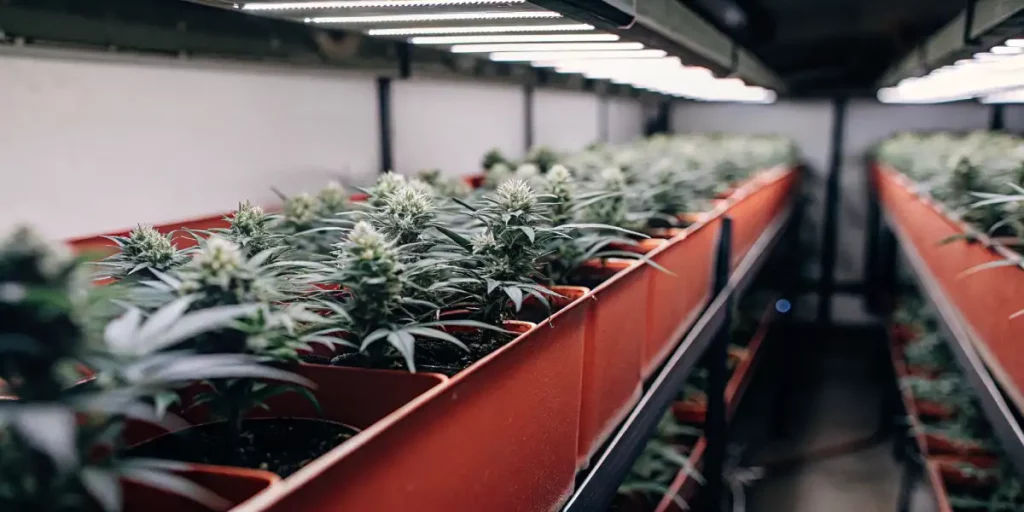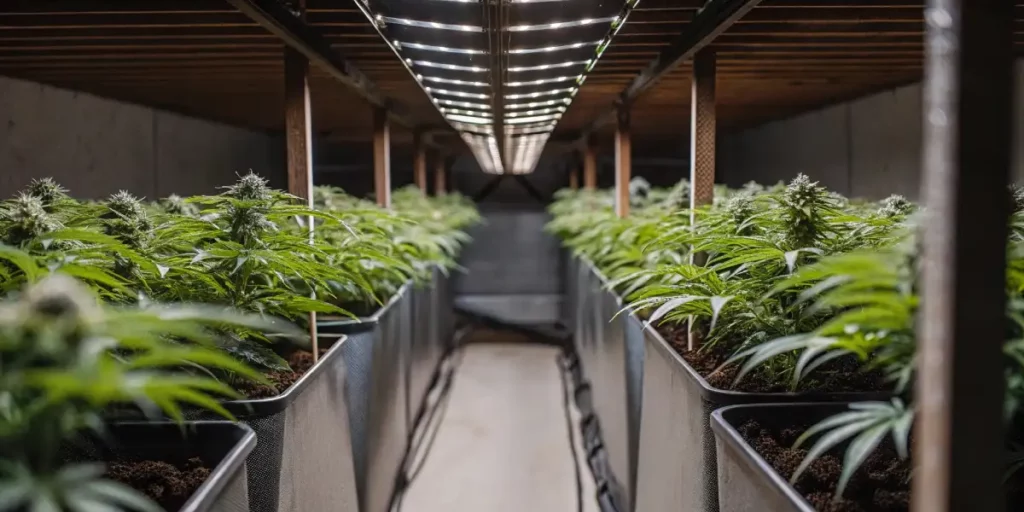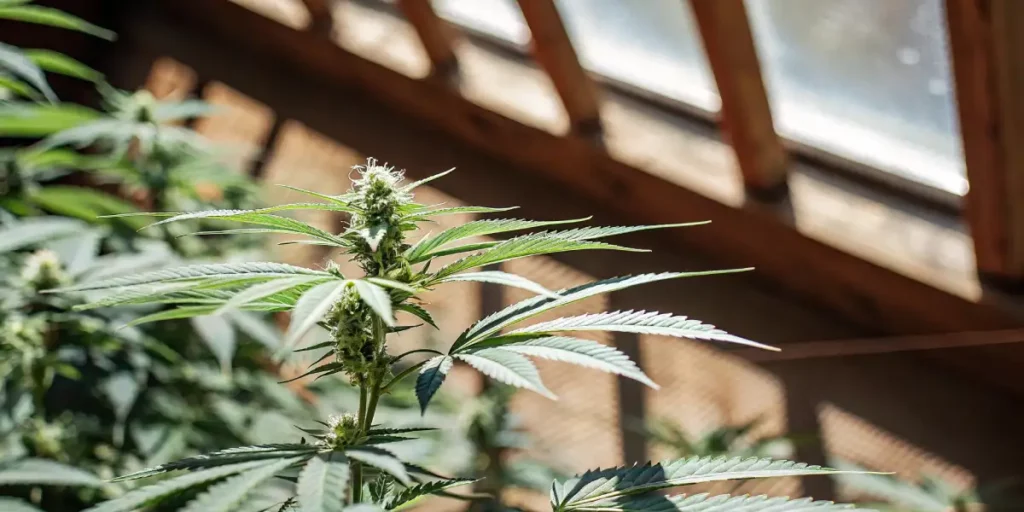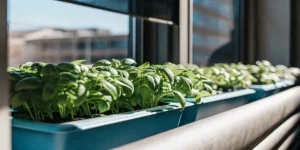Autoflowering cannabis varieties are unique plants. Unlike their photoperiod counterparts, these plants flower based on age, not light cycle. This makes them perfect for beginners and seasoned growers. But when do autoflowers start flowering? Typically, autoflowers begin their flowering stage around 3 to 4 weeks after germination. The exact timing can vary, but this is a reliable guideline.
Knowing the best time for the autoflower flowering stage is crucial for success. The flowering phase is when your plants develop buds, the part everyone loves. During this period, you want to ensure your plants have everything they need. Light, nutrients, and water all play a critical role.
For those looking to cultivate strains like Gorilla Glue 4 from Global Green Genetics, knowing the autoflower flowering timeline guide is essential. These strains can produce exceptional yields if managed correctly. Regular monitoring and a little patience go a long way.
How to Know When Autoflowers Start Flowering
Spotting the signs of autoflower flowering stage is easier than you might think. Look for changes in the plant’s structure. You’ll notice small white hairs, known as pistils, forming at the nodes. These are early indicators that your plant is entering the flowering stage.
Another sign is the stretching of the plant. As autoflowers move from the vegetative to flowering stage, they often undergo a growth spurt. This can last for a week or two. If you’re growing indoors, be prepared to adjust your grow space to accommodate the extra height.
Knowing how to know when autoflowers start flowering can significantly improve your growing outcomes. Observing plant behavior and physical changes provides insight into their needs. This allows you to tailor your care methods and maximize bud production effectively.
Additionally, tracking your plants’ progress through a journal or digital log can help correlate external factors with growth patterns. This becomes a valuable resource for future grows, helping predict when do autoflowers start flowering based on accumulated data.
Optimal Conditions for Autoflower Flowering
Providing optimal conditions for autoflower flowering is crucial. Start with light. Autoflowers plants thrive under a consistent light schedule, usually 18 hours on and 6 hours off. This helps mimic the long daylight hours found in nature during summer.
Nutrient management is another key factor. During the flowering stage, your plants will need more phosphorus and potassium. These nutrients support bud development. Consider using a specialized flowering nutrient mix to give your plants what they need.
Temperature control is another pillar of success during the flowering phase. Drastic temperature fluctuations can stress the plants and hinder bud development. Keeping your environment stable is a part of maintaining the optimal conditions for autoflower flowering.
Ventilation is equally important. A well-ventilated space helps regulate temperature and humidity, preventing mold and promoting healthy airflow. This ensures each part of the plant receives the CO2 necessary for photosynthesis, facilitating robust growth.

Examples of Autoflower Strains
If you’re seeking strains that perform well, consider options available at Global Green Genetics. Gorilla Glue 4 is a favorite for its potency and resin production. It’s an excellent choice for those who want high yields with minimal fuss.
Another popular strain is Blueberry. Known for its sweet aroma and relaxing effects, this strain is ideal for evening use. Blueberry autoflowers are hardy and can withstand varied conditions, making them great for beginners.
When exploring different strains, it’s essential to consider the autoflower flowering timeline guide to align your expectations with reality. Each strain’s unique genetics will influence when do autoflowers start flowering and the duration of the flowering phase.
Researching the lineage and characteristics of each strain helps in selecting those that align with your growing conditions and goals. Strains like Gorilla Glue and Blueberry offer a balance of potency and resilience, suitable for diverse environments.
More Strains to Consider
For a unique experience, try the Amnesia Haze Autoflower from Global Green Genetics. This strain is famous for its uplifting effects and is a staple in many growers’ gardens. It has a relatively short flowering period, making it a convenient option.
Each of these strains has its own flowering timeline. However, the principles of when do autoflowers start flowering remain consistent. With the right care, these plants can thrive and produce quality buds.
Besides to Amnesia Haze, consider strains like Northern Lights and White Widow. These offer distinct flavors and effects, catering to a variety of preferences and enhancing your growing repertoire.
Experimenting with different strains allows growers to discover new favorites and understand how various genetics impact the autoflower flowering timeline. This knowledge can refine your cultivation strategies for future grows.
- Monitor light cycles and adjust as needed.
- Ensure proper nutrient levels, focusing on phosphorus and potassium.
- Keep environmental factors like temperature and humidity in check.
- Choose strains that match your growing conditions and experience level.
- Be patient and allow plants to develop naturally.

FAQs of when do autoflowers start flowering
What is the best time for autoflower flowering stage?
The best time for autoflower flowering stage is usually 3 to 4 weeks after planting. This can vary based on strain and growing conditions, but it’s a typical timeline. During this time, ensure your plants have optimal light and nutrients to support healthy growth.
Monitor your plants regularly. Look for signs like pistil development and growth spurts. These are good indicators that your plant is transitioning to the flowering stage. Adjust your care routine to meet the changing needs of the plant.
The timing of when do autoflowers start flowering is influenced by both genetics and environmental factors. Knowing these elements can help anticipate the best time for autoflower flowering stage and prepare accordingly.
Proper preparation involves preemptively adjusting light schedules, nutrient mixes, and environmental conditions. These proactive measures ensure a seamless transition into the flowering phase, promoting robust bud development.
How can I tell when my autoflowers start flowering?
Look for small white hairs, or pistils, at the nodes of the plant. These are among the first signs of the flowering stage. Additionally, your plant may start stretching as it shifts focus from vegetative growth to bud production.
Keep a close eye on your plants during the early weeks. Changes in structure and growth patterns are strong signals. Once you notice these signs, it’s time to adjust your care techniques to support the flowering process.
Recognizing the signs of autoflower flowering stage allows you to adapt your care routine promptly. This responsiveness is crucial for optimizing plant health and maximizing yield potential.
Utilizing tools like magnifying glasses or digital cameras can help spot the subtle changes in pistil and trichome development. These tools provide a closer look at the plant’s transition, aiding in precise care adjustments.
What are the optimal conditions for autoflower flowering?
Optimal conditions include a consistent light schedule, ideally 18 hours on and 6 hours off. This supports healthy growth and mimics natural sunlight patterns. Nutrients are also critical; focus on phosphorus and potassium during this stage.
Temperature and humidity should be monitored closely. Aim for temperatures between 68-77°F and humidity levels of 40-50%. These conditions help prevent mold and other growth issues, ensuring a healthy flowering stage.
Proper soil composition and pH levels also play a vital role in the flowering stage. Ensuring the soil autoflower is well-aerated and maintaining a pH between 6.0 and 7.0 can enhance nutrient uptake, supporting robust flower development.
Regularly calibrating and cleaning equipment, such as pH meters and hygrometers, ensures accurate readings and effective environmental control. These practices contribute to maintaining optimal conditions for autoflower flowering.
How long is the autoflower flowering timeline?
The autoflower flowering timeline generally lasts about 8 to 10 weeks from the start of flowering. This can vary based on strain and specific growing conditions. For example, the Mikromachine Auto follows a similar cycle, developing dense buds and preparing for harvest within this timeframe.
Pay attention to the development of buds and trichomes. As the timeline progresses, these will mature and give clues about the readiness for harvest. Patience and observation are key during this final phase.
Knowing the autoflower flowering timeline guide can enhance your ability to plan harvests. By knowing the typical duration, growers can schedule nutrient applications and other interventions to align with the plant’s developmental needs.
Maintaining a consistent routine throughout the flowering timeline ensures that plants receive the necessary support at each stage. This consistency is vital for achieving desired potency, flavor, and yield.
Can different strains affect when autoflowers start flowering?
Yes, different strains can have varied flowering timelines. Strains like Gorilla Glue 4, Blueberry, and Amnesia Haze from Global Green Genetics each have unique characteristics. These can influence how quickly they enter the flowering stage and how long they take to mature.
Choose strains that fit your growing conditions and experience level. Some may require more attention or have specific nutrient needs. By selecting the right strain, you can optimize your growing experience and achieve desired results.
Knowing the genetics behind each strain provides insight into their specific needs and flowering behaviors. This knowledge aids in selecting strains that complement the environmental conditions you can provide.
Experimenting with various strains can reveal new insights into when do autoflowers start flowering and how different genetics respond to your cultivation methods. This experimentation is key to refining your growing skills and achieving optimal results.





